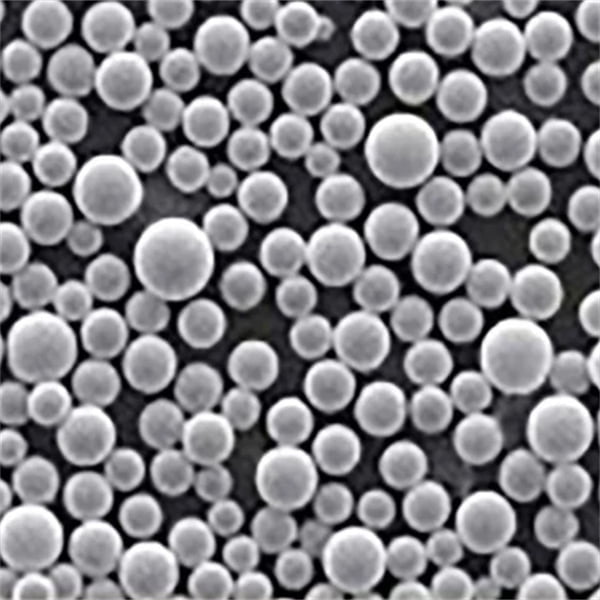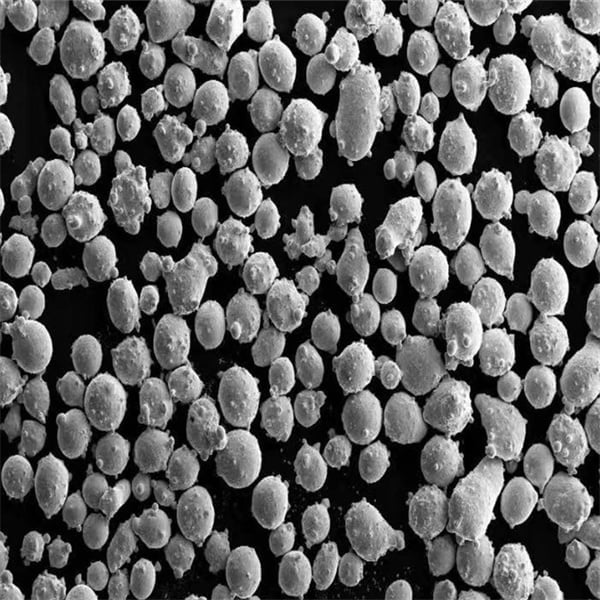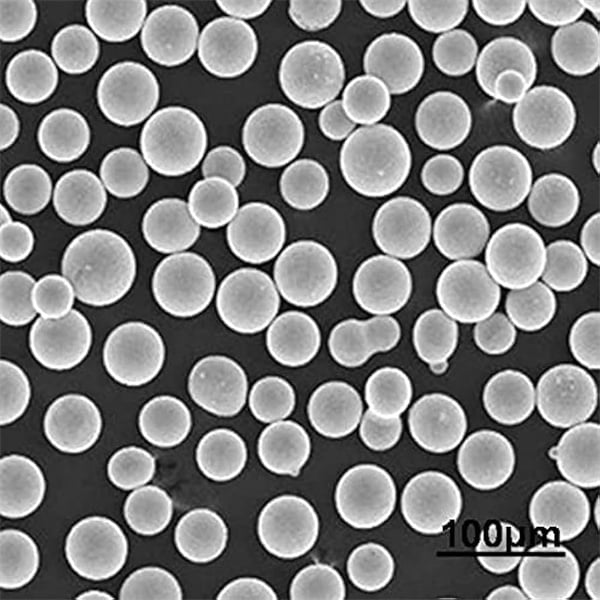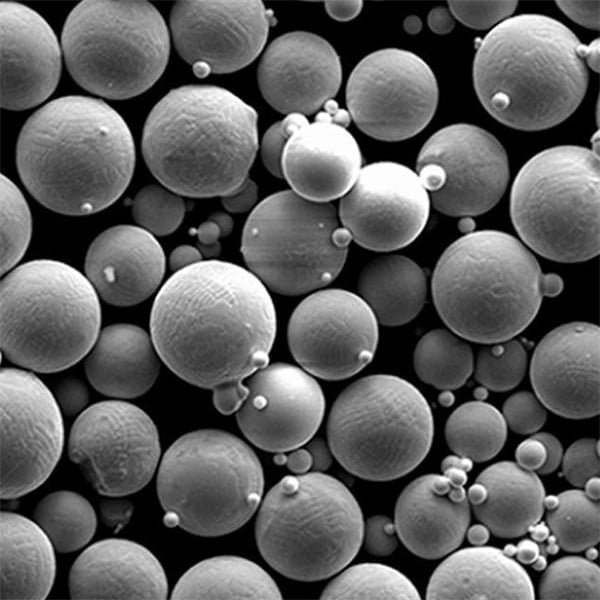3D Baskı Metal Malzemeler
İçindekiler
Overview of 3D Printing Metal Materials
3D baskı olarak da bilinen eklemeli üretimdoğrudan 3D CAD verilerinden karmaşık metal parçaların oluşturulmasına olanak tanır. CNC işleme gibi geleneksel eksiltici yöntemlerin aksine, 3D baskı, özel takım veya fikstürlere ihtiyaç duymadan parçaları katman katman oluşturur.
Metal 3D baskı, karmaşık geometrilere sahip özelleştirilmiş, hafif ve yüksek performanslı metal bileşenler üretmek için yeni olanaklar sunuyor. Havacılık, otomotiv, tıp ve savunma endüstrileri, son kullanım üretim uygulamaları için metal 3D baskıyı giderek daha fazla benimsiyor.
Ancak, tüm metaller kolayca 3D yazdırılamaz. En yaygın kullanılan metal malzemeler alüminyum, titanyum, nikel, paslanmaz çelik ve kobalt-krom alaşımlarıdır. Malzeme seçimi özel uygulama gereksinimlerine bağlıdır - mukavemet, korozyon direnci, yüksek sıcaklık performansı, biyouyumluluk vb.
Bu kapsamlı kılavuz, 3D baskıda kullanılan çeşitli metaller ve alaşımlar hakkında ayrıntılı bir genel bakış sağlar. İhtiyaçlarınıza uygun doğru malzemeyi seçmenize yardımcı olmak için popüler metal malzemelerin bileşimini, özelliklerini, uygulamalarını ve artılarını ve eksilerini tartışıyoruz.
Metal 3D Baskı Malzemelerine İlişkin Temel Çıkarımlar:
- Alüminyum alaşımları daha düşük maliyetlerle iyi bir mukavemet/ağırlık oranı ve korozyon direnci sunar.
- Titanyum alaşımları, tıbbi kullanımlar için düşük yoğunluk ve biyouyumluluk ile mükemmel güç sağlar.
- Paslanmaz çelikler, takım ve fonksiyonel parçalar için yüksek mukavemet ve korozyon direncine sahiptir.
- Nikel süper alaşımlar yüksek sıcaklıklara dayanabilir ve bu da onları havacılık için uygun hale getirir.
- Kobalt-krom alaşımları dişçilik ve tıbbi implantlar için sertlik, aşınma direnci ve biyouyumluluk sağlar.
- Malzeme seçimi mekanik gereksinimlere, işlem sonrası ihtiyaçlara, maliyetlere ve 3D baskı yönteminin uygunluğuna bağlıdır.
- Parça oryantasyonu, destek yapıları, katman kalınlığı ve yapı parametrelerinin her metal malzeme için optimize edilmesi gerekir.
- Sıcak izostatik presleme gibi işlem sonrası süreçler nihai parça özelliklerini geliştirebilir.
3D Baskı için Metal Malzemelerin Bileşimi
| Metal Kategorisi | Yaygın Alaşımlar | Kompozisyon | Özellikler | Uygulamalar |
|---|---|---|---|---|
| Çelik | 17-4 PH Stainless Steel, 316L Stainless Steel, AISI 4130 Steel | Primarily iron (Fe) with varying amounts of chromium (Cr), nickel (Ni), molybdenum (Mo), carbon (C), and manganese (Mn). | Excellent strength, corrosion resistance, and versatility. Can be heat treated for specific properties. | Aerospace components, medical implants, automotive parts, tools and dies |
| Alüminyum | AlSi10Mg, AlSi7Mg0.3, Scalmalloy | Primarily aluminum (Al) with additions of silicon (Si), magnesium (Mg), and sometimes copper (Cu) or scandium (Sc). | Lightweight, good strength-to-weight ratio, and high thermal conductivity. Can be post-processed for added strength. | Aircraft parts, heat sinks, automotive components, prosthetics and orthotics |
| Titanyum | Ti-6Al-4V, CP Titanium | Primarily titanium (Ti) with aluminum (Al) and vanadium (V) as main alloying elements. | Yüksek mukavemet/ağırlık oranı, mükemmel korozyon direnci ve biyouyumluluk. | Aerospace components, medical implants, sporting goods, chemical processing equipment |
| Nikel Süperalaşımlar | Inconel 625, Inconel 718 | Primarily nickel (Ni) with additions of chromium (Cr), iron (Fe), cobalt (Co), molybdenum (Mo), and niobium (Nb). | Olağanüstü yüksek sıcaklık dayanımı, oksidasyon direnci ve sürünme direnci. | Gas turbine engine components, heat exchangers, rocket engine parts |
| Kobalt-Krom | CoCrMo, Haynes 214 | Primarily cobalt (Co) and chromium (Cr) with molybdenum (Mo) and other elements for specific properties. | High strength, wear resistance, biocompatibility, and good corrosion resistance. | Medical implants, dental prosthetics, cutting tools, wear-resistant components |
| Refrakter Metaller | Tungsten (W), Tantalum (Ta) | Pure metals with very high melting points. | Exceptional high-temperature strength and heat resistance. Not widely used due to high cost and difficulty in processing. | Furnace components, crucibles, rocket engine nozzles, heat shields |
| Değerli Metaller | Gold (Au), Silver (Ag) | Pure metals or alloys with other precious metals. | High electrical conductivity, reflectivity, and biocompatibility (for specific alloys). Limited use due to high cost. | Electrical connectors, medical devices (limited applications), decorative components |

Metal Malzemelerin Mekanik Özellikleri
| Mülkiyet | Açıklama | Birimler | Importance in Engineering Applications | Examples of Materials with High Values |
|---|---|---|---|---|
| Güç | The ability of a metal to resist deformation or fracture under an applied load. There are different types of strength, such as tensile strength (resistance to pulling forces), compressive strength (resistance to pushing forces), and shear strength (resistance to forces that tend to cause the material to slide). | MPa (Megapascals), ksi (thousand pounds per square inch) | Strength is a fundamental consideration for any load-bearing component. The specific type of strength required depends on the anticipated loading conditions. | • High-strength steel: Used in bridges, buildings, and vehicles due to its excellent tensile strength. |
| Sertlik | A measure of a metal’s resistance to elastic deformation under load. Stiff materials exhibit minimal deflection under stress. Stiffness is quantified by Young’s Modulus, which relates stress (applied force) to strain (resulting deformation). | GPa (Gigapascals), psi (pounds per square inch) | Stiffness is crucial for applications requiring dimensional stability, such as machine tool frames and precision instruments. | • Aluminum: Offers a good balance between stiffness and weight, making it ideal for aircraft construction. |
| Esneklik | The ability of a metal to deform under load and then return to its original shape once the load is removed. Elastic behavior is desirable in many applications, as it ensures components can recover from temporary stresses without permanent damage. | – | Elasticity is essential for components that experience repeated loading and unloading, such as springs and shock absorbers. | • Spring steel: Possesses excellent elastic properties, allowing it to store and release energy efficiently. |
| Plasticity | The ability of a metal to undergo permanent deformation under load without fracture. Plastic deformation is useful for shaping metals into desired forms through processes like forging or extrusion. | % elongation | Plasticity is advantageous for manufacturing applications where metals need to be bent, drawn, or pressed into specific shapes. | • Copper: Highly ductile and malleable, making it suitable for electrical wiring and plumbing due to its ease of shaping. |
| Süneklik | The ability of a metal to be drawn into thin wires without breaking. Ductility is a measure of a metal’s capacity for plastic deformation in tension. | % elongation | Ductile metals are valuable for applications requiring wires, cables, or other elongated forms. | • Gold: Exceptionally ductile, allowing it to be hammered into thin sheets for jewelry and decorative purposes. |
| İşlenebilirlik | The ability of a metal to be flattened into thin sheets without breaking. Malleability reflects a metal’s capacity for plastic deformation in compression. | % reduction in area | Malleable metals are well-suited for applications requiring flat sheets or panels. | • Aluminum: Highly malleable, making it a popular choice for food packaging and building materials. |
| Sertlik | The ability of a metal to absorb energy before fracturing. Tough materials can withstand significant impact or force without breaking. | J/m (Joules per meter) | Toughness is critical for components subjected to impact or dynamic loading, such as hammers and vehicle parts. | • Steel alloys: Can be formulated to achieve high toughness for applications demanding strength and impact resistance. |
| Resilience | The ability of a metal to absorb energy elastically and then release it upon unloading. Resilient materials can recover stored elastic energy after deformation. | J/m (Joules per meter) | Resilience is beneficial for components that experience repeated bending or flexing, such as springs and beams. | • High-carbon steel: Exhibits good resilience due to its balanced combination of strength and elasticity. |
| Sürünme | The tendency of a metal to deform plastically under a constant load over time, particularly at elevated temperatures. Creep is a concern for applications involving long-term exposure to high stresses and temperatures. | % strain per unit time | Creep resistance is crucial for components operating under sustained loads at high temperatures, such as turbine blades and boiler tubes. | • Nickel-based superalloys: Engineered to resist creep at extreme temperatures, making them ideal for jet engine components. |
| Sertlik | The resistance of a metal to localized plastic deformation from an indentation or scratching force. Hardness is often correlated with wear resistance. | Brinell hardness (HB), Vickers hardness (HV) | Hardness is essential for components that experience wear and tear, such as cutting tools and bearings. | • Tungsten carbide: Exceptionally hard, making it a valuable material for drill bits and wear plates. |

Metal 3D Baskı Uygulamaları
| Uygulama | Açıklama | Avantajlar | Endüstriler |
|---|---|---|---|
| Functional Prototypes | Metal 3D printing allows engineers to create fully functional prototypes of parts much faster and more cost-effectively than traditional methods like CNC machining. These prototypes can be rigorously tested to validate design concepts before committing to mass production. | * Reduced Time to Market: Parts can be iterated on quickly, accelerating the development process. * Increased Design Freedom: Complex geometries and internal features can be easily incorporated. * Material Accuracy: Prototypes can be made from the same metal intended for final production. | * Aerospace: Engine components, air ducts, landing gear parts. * Automotive: Engine blocks, transmission components, lightweight body panels. * Medical Devices: Surgical instruments, prosthetics, custom implants. |
| Low-Volume & Specialty Parts | Metal 3D printing excels at producing small batches or one-off parts that would be expensive or impractical to manufacture with traditional techniques. This opens doors for customization, on-demand manufacturing, and niche applications. | * Reduced Minimum Order Quantities: Eliminates the need for expensive tooling setups typically required for low-volume production. * Design for Customization: Parts can be easily personalized for specific needs or applications. * Complexities Made Simple: intr intricate geometries and internal features can be readily produced. | * Motorsports: Custom gears, brackets, and lightweight components. * Oil & Gas: Replacement parts for downhole equipment, bespoke valves and fittings. * Defense: Weaponry components, customized armor plating, specialty tools. |
| Surgical & Dental Implants | Metal 3D printing is transforming medical care by enabling the creation of personalized implants with complex lattice structures that promote bone ingrowth and osseointegration. This leads to improved patient outcomes and faster recovery times. | * Personalized Implants: Custom-designed implants that perfectly match a patient’s anatomy can be created. * Improved Biocompatibility: Porous structures created through 3D printing encourage bone growth and tissue attachment. * Reduced Risk of Rejection: 3D printing allows for the use of biocompatible materials like titanium and tantalum. | * Orthopedics: Hip and knee replacements, custom spinal implants, trauma repair plates. * Dentistry: Dental crowns and bridges, complex jaw implants, customized surgical guides. |
| Complex Brackets & Heat Exchangers | Metal 3D printing allows for the creation of intricate brackets and heat exchangers with internal channels and lightweight lattice structures that would be impossible or prohibitively expensive to manufacture using traditional methods. | * Design Optimization: Lightweight and strong brackets can be designed to minimize weight and improve performance. * Enhanced Heat Transfer: Complex internal channels can be incorporated into heat exchangers for superior thermal management. * Freedom of Design: 3D printing allows for the creation of geometries that push the boundaries of conventional manufacturing. | * Aerospace: Lightweight brackets for aircraft structures, complex heat exchangers for engine cooling. * Automotive: High-performance heat exchangers for racing engines, intricate brackets for suspension systems. * Consumer Electronics: Thermal management solutions for laptops, heat sinks for high-power electronics. |
| End-of-Arm Tooling (EOAT) | Metal 3D printing enables the creation of customized EOAT for robots that perfectly match the specific requirements of a task. This leads to increased efficiency, flexibility, and improved production processes. | * Conformal Grippers: Grippers can be 3D printed to precisely match the shape of the object being handled. * Lightweight Design: Metal 3D printing allows for the creation of lightweight grippers that improve robot speed and dexterity. * Reduced Lead Times: Custom EOAT can be designed and printed quickly, minimizing downtime during production setup. | * Automotive Manufacturing: Grippers for handling car parts during assembly. * Electronics Assembly: Precision tools for delicate component placement. * Food & Beverage: Custom grippers for handling fragile food items. |
Temel Metal Malzemelerin Artıları ve Eksileri
İşte 3D baskıda kullanılan popüler metal alaşımlarının avantajları ve sınırlamalarının bir karşılaştırması:
| Malzeme | Artıları | Eksiler |
|---|---|---|
| Alüminyum 6061 | Düşük maliyet, iyi korozyon direnci | Daha düşük güç |
| Alüminyum 7075 | Yüksek mukavemet/ağırlık oranı | Kaynak yapmak zor |
| Titanyum Ti-6Al-4V | Yüksek mukavemet, düşük yoğunluk | Pahalı malzeme |
| Paslanmaz Çelik 316L | Mükemmel korozyon direnci | Alaşımlardan daha düşük mukavemet |
| Inconel 718 | Aşırı sıcaklıklara dayanıklıdır | Makine için zorlu |
| Kobalt Krom | Mükemmel aşınma ve biyouyumluluk | Sınırlı süneklik |
Metal 3D Baskı Malzemeleri Tedarikçileri
Birçok şirket, özellikle 3D baskı işlemleri için metal tozları ve teller sağlamaktadır:
| Malzeme | Kilit Tedarikçiler |
|---|---|
| Alüminyum Alaşımları | AP&C, Sandvik, HC Starck |
| Titanyum Alaşımları | AP&C, TLS Technik, Tekna |
| Paslanmaz Çelikler | Sandvik, Carpenter Katkı Maddesi |
| Nikel Süperalaşımlar | AP&C, Sandvik, Praxair |
| Kobalt Krom Alaşımları | AP&C, Sandvik, SLM Çözümleri |
Toz kalitesi, kıvamı, partikül şekli ve boyut dağılımı gibi faktörler nihai parça özelliklerini ve baskı süreci kararlılığını etkiler. Tanınmış tedarikçiler, AM için özel olarak tasarlanmış iyi karakterize edilmiş ve özelleştirilmiş alaşımlar sağlar.

Metal 3D Baskı Malzemelerinin Maliyet Analizi
Malzeme maliyetleri, metal 3D baskıda nihai parça maliyetinin önemli bir bölümünü oluşturur. Aşağıda yaklaşık fiyat aralıkları verilmiştir:
| Malzeme | Kg başına maliyet | Cm3 başına maliyet |
|---|---|---|
| Alüminyum Alaşımları | $50-$150 | $0.15-$0.45 |
| Titanyum Alaşımları | $350-$1000 | $1.00-$3.00 |
| Paslanmaz Çelikler | $90-$250 | $0.25-$0.75 |
| Inconel 718 | $350-$600 | $2.50-$4.50 |
| Kobalt Krom | $500-$1200 | $3.50-$8.50 |
- Titanyum ve kobalt krom alaşımları en pahalısı iken alüminyum orta fiyatlıdır.
- Malzeme maliyetleri üretim hacmi ile ölçeklenir - pahalı alaşımlardaki daha büyük parçalar daha yüksek malzeme bütçeleri gerektirir.
- Destek atıklarını ve işlem sonrası süreçleri azaltmaya yönelik optimizasyon, etkin malzeme maliyetlerini düşürmeye yardımcı olabilir.
Metal Tozları için Standartlar
Tekrarlanabilir yüksek kaliteli baskılar sağlamak için 3D baskıda kullanılan metal tozlarının belirli minimum standartları karşılaması gerekir:
| Mülkiyet | Temel Standartlar |
|---|---|
| Parçacık boyutu dağılımı | ASTM B822, ISO 4490 |
| Akışkanlık | ASTM B213, ISO 4490 |
| Görünür yoğunluk | ASTM B212, ISO 3923 |
| Musluk yoğunluğu | ASTM B527, ISO 3953 |
| Kimyasal bileşim | ASTM E1479, OES analizi |
- Toz kalitesi yoğunluk, yüzey kalitesi ve mekanik özellikler gibi nihai parça özelliklerini etkiler.
- Kontrollü partikül boyutu dağılımına sahip küresel tozlar mükemmel akışkanlığa sahiptir.
- Tutarlı kimya ve yoğunluk, proses istikrarı ve tekrarlanabilirlik sağlar.
Metaller için 3D Baskı Yöntemleri
Çeşitli 3D baskı teknolojileri metalleri ve alaşımları işleyebilir:
| Yöntem | Malzemeler | Temel Avantajlar | Sınırlamalar |
|---|---|---|---|
| Toz Yatağı Füzyonu | Çoğu alaşım | Mükemmel hassasiyet ve yüzey kalitesi | Yavaş inşa oranları |
| Yönlendirilmiş Enerji Biriktirme | Çoğu alaşım | Mevcut parçalar üzerinde yerleşik özellikler | Daha düşük çözünürlük |
| Binder Jetting | Paslanmaz çelik | Yüksek hızlı baskı | Daha düşük güç |
| Metal Ekstrüzyon | Sınırlı alaşımlar | Düşük ekipman maliyetleri | Daha düşük yoğunluk |
- DMLS gibi toz yatağı teknolojileri en yüksek çözünürlük ve doğruluğu sunar.
- Bağlayıcı püskürtme daha geniş bir alaşım yelpazesi ile çalışır, ancak daha düşük nihai parça mukavemetine sahiptir.
- Yönlendirilmiş enerji biriktirme, ağ şekline yakın büyük parçaların basılmasına olanak tanır.
İşlem Sonrası Gereksinimler
As-baskılı metal parçalar tipik olarak istenen özellikleri elde etmek için işlem sonrası gerektirir:
| İşlem Sonrası | Amaç | Kullanılan Malzemeler |
|---|---|---|
| Destek kaldırma | Destek yapılarını kaldırın | İnce, kırılgan destekli alaşımlar |
| Stres giderici | Artık gerilmeleri azaltın | Tüm alaşımlar |
| Sıcak izostatik presleme | Yoğunluğu artırın, özellikleri geliştirin | Tüm alaşımlar |
| Yüzey bitirme | Yüzey pürüzlülüğünü iyileştirin | Tüm alaşımlar |
| Isıl işlem | Mikroyapıyı değiştirin | Alüminyum gibi yaşla sertleşebilen alaşımlar |
| Talaşlı İmalat | Doğru boyutlar ve yüzey kalitesi | Çoğu alaşım |
- Distorsiyonu önlemek için tüm alaşımlar için gerilim giderici ısıl işlem önerilir.
- HIP işlemi nihai malzeme özelliklerini önemli ölçüde geliştirebilir.
- CNC işleme, boyutsal doğruluk ve yüzey kalitesi sağlar.

3D Baskı için Metal Malzeme Nasıl Seçilir?
| Faktör | Açıklama | Dikkate Alınması Gerekenler | Örnekler |
|---|---|---|---|
| Başvuru Koşulları | The primary function of the 3D printed part will heavily influence material selection. Consider factors like: * Güç ve Dayanıklılık: How much stress will the part experience? * Ağırlık: Is lightweight construction essential? * Isı Direnci: Will the part be exposed to high temperatures? * Korozyon Direnci: Will the part encounter harsh environments? | * Prioritize high-strength options like Titanium alloys or Maraging Steel for load-bearing components. * For lightweight applications, Aluminum or Nickel alloys offer excellent strength-to-weight ratios. * Inconel and Nickel alloys excel in high-temperature environments like jet engines. * Parts exposed to saltwater or chemicals may benefit from the superior corrosion resistance of Stainless Steel. | * Havacılık ve uzay: High-strength Titanium alloys for landing gear or engine components. * Otomotiv: Aluminum alloys for lightweight body panels or pistons. * Tıbbi Cihazlar: Biocompatible Titanium for implants or surgical instruments. * Denizcilik Uygulamaları: Corrosion-resistant Stainless Steel for boat propellers or saltwater pumps. |
| 3D Baskı Süreci | Different metal 3D printing technologies have varying capabilities and material compatibility. Consider: * Makine Uyumluluğu: Ensure the chosen material is compatible with your specific 3D printer’s technology (e.g., Laser Beam Melting, Binder Jetting). * Malzeme Durumu: Not all materials are readily available for every 3D printing process. * Surface Finish & Post-Processing: Some materials may require additional finishing steps to achieve desired surface quality. | * Laser Beam Melting (LBM) offers a wide range of compatible materials, including high-performance alloys like Titanium and Inconel. * Binder Jetting is well-suited for materials like Stainless Steel and some tool steels. * Electron Beam Melting (EBM) is ideal for highly reactive materials like Titanium but may require more extensive post-processing for surface finishing. | * LBM: Widely used for its versatility, compatible with materials like Titanium alloys, Stainless Steel, and Inconel. * Bağlayıcı Püskürtme: Well-suited for cost-effective printing of Stainless Steel parts for less demanding applications. * EBM: Ideal for complex Titanium components in aerospace or medical applications, but post-processing can add time and cost. |
| Malzeme Özellikleri | Beyond the basic properties like strength and weight, consider these additional characteristics: * Ductility (Formability): How easily can the material be bent or shaped without breaking? * Termal İletkenlik: How well does the material conduct heat? * Biyouyumluluk: Is the material safe for implantation in the human body? * Elektriksel İletkenlik: Does the part require electrical conductivity for its function? | * Süneklik: Ductile materials like certain Nickel alloys may be preferable for parts requiring some degree of bending or forming. * Termal İletkenlik: High thermal conductivity materials like Aluminum are ideal for heat exchangers or heat sinks. * Biyouyumluluk: For medical implants, biocompatible materials like Titanium or Tantalum are essential. * Elektriksel İletkenlik: Copper or Copper alloys would be suitable choices for parts requiring electrical conduction. | * Süneklik: Nickel alloys like Inconel 625 offer good ductility for parts requiring some formability. * Termal İletkenlik: Aluminum alloys are excellent choices for heat exchangers due to their high thermal conductivity. * Biyouyumluluk: Titanium and Tantalum are biocompatible choices for implants due to their minimal tissue irritation. * Elektriksel İletkenlik: Copper is the best conductor of electricity readily available for 3D printing. |
| Maliyet Değerlendirmeleri | Material cost, along with potential post-processing needs, can significantly impact the overall project budget. * Material Price: Some exotic alloys like Inconel or precious metals like Gold can be very expensive. * Toz Kalitesi: Higher quality metal powders may have a higher cost but can lead to better printability and part quality. * İşlem sonrası: Certain materials may require additional steps like heat treatment or machining, adding to the cost. | * Prioritize cost-effective materials like Stainless Steel or Aluminum for non-critical applications. * When high performance is essential, consider the long-term benefits of a more expensive material like Titanium. * Evaluate the cost of post-processing needs and factor that into the overall material selection process. | * Uygun Maliyetli: Stainless Steel or Aluminum often offer good value for less demanding applications. * High-Performance: Titanium alloys provide excellent strength-to-weight ratio but come at a premium cost. * Balance Needed: Consider the trade-off between material cost, performance requirements, and necessary post-processing. |
SSS
S: 3D baskı için en yüksek mukavemete sahip metal alaşım hangisidir?
C: Inconel 718 gibi Inconel süper alaşımları en yüksek gerilme mukavemetine sahiptir ancak daha az sünektir. Titanyum Ti-6Al-4V en yüksek mukavemet/ağırlık oranına sahiptir.
S: Paslanmaz çelikten 3D olarak basılan parçalar korozyona dayanıklı mı?
C: Evet, 316L ve diğer paslanmaz çelik alaşımları 3D baskıdan sonra mükemmel korozyon direncini korur.
S: 3D baskıda en yaygın kullanılan titanyum alaşımı nedir?
C: Ti-6Al-4V, tüm titanyum 3D baskıların 90%'sini oluşturan en popüler titanyum alaşımıdır. En iyi çok yönlü özellikleri sunar.
S: 3D baskı için en iyi alüminyum alaşımı hangisidir?
C: 6061 ve 7075 en yaygın kullanılanlardır, 6061 daha düşük maliyetle iyi korozyon direnci sunar ve 7075 yüksek mukavemetli yapısal uygulamalar için seçilir.
S: Metal 3D baskılı parçalar için işlem sonrası adımlar zorunlu mu?
C: Optimum malzeme özellikleri ve performans için destek kaldırma, gerilim giderme ve yüzey bitirme gibi son işlemler şiddetle tavsiye edilir.
S: Hangi 3D baskı süreci en geniş metal alaşım yelpazesiyle çalışır?
C: Bağlayıcı püskürtme ve yönlendirilmiş enerji biriktirme çoğu alaşımla çalışabilir, ancak toz yatağı füzyonu daha yüksek çözünürlüklü parçalar üretir.
S: Metallerin işlenmesi ve 3D baskısı arasında parça doğruluğu nasıl karşılaştırılır?
C: CNC ile işlenmiş parçalar, 3D baskılı metallere göre daha sıkı toleranslar ve daha iyi yüzey kalitesi sağlar. Bununla birlikte, 3D baskı daha karmaşık geometrileri mümkün kılar.
S: Hangi metal 3D baskı işlemi en yüksek yapı hızlarına sahip?
C: Bağlayıcı püskürtme, toz yatağı füzyon işlemlerinden 10 kata kadar daha hızlı parçalar oluşturarak en yüksek baskı hızlarına ulaşabilir.
Paylaş
MET3DP Technology Co, LTD, merkezi Qingdao, Çin'de bulunan lider bir katmanlı üretim çözümleri sağlayıcısıdır. Şirketimiz, endüstriyel uygulamalar için 3D baskı ekipmanları ve yüksek performanslı metal tozları konusunda uzmanlaşmıştır.
İşletmeniz için en iyi fiyatı ve özelleştirilmiş Çözümü almak için sorgulayın!
İlgili Makaleler

Yüksek Performanslı Nozul Kanat Segmentleri: Metal 3D Baskı ile Türbin Verimliliğinde Devrim
Daha Fazla Oku "Met3DP Hakkında
Son Güncelleme
Bizim Ürünümüz
BİZE ULAŞIN
Herhangi bir sorunuz var mı? Bize şimdi mesaj gönderin! Mesajınızı aldıktan sonra tüm ekibimizle talebinize hizmet edeceğiz.

3D Baskı ve Katmanlı Üretim için Metal Tozları
ÜRÜN
cONTACT BİLGİLERİ
- Qingdao Şehri, Shandong, Çin
- [email protected]
- [email protected]
- +86 19116340731








